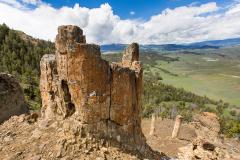The Milky Way Above The Little Missouri River In Wind Canyon, Theodore Roosevelt National Park
"Half the park is after dark," says the National Park Service. There are spots within Theodore Roosevelt National Park in North Dakota that offer broad vistas perfect for night sky viewing and photography.
- By Rebecca Latson - August 26th, 2024 3:00am















